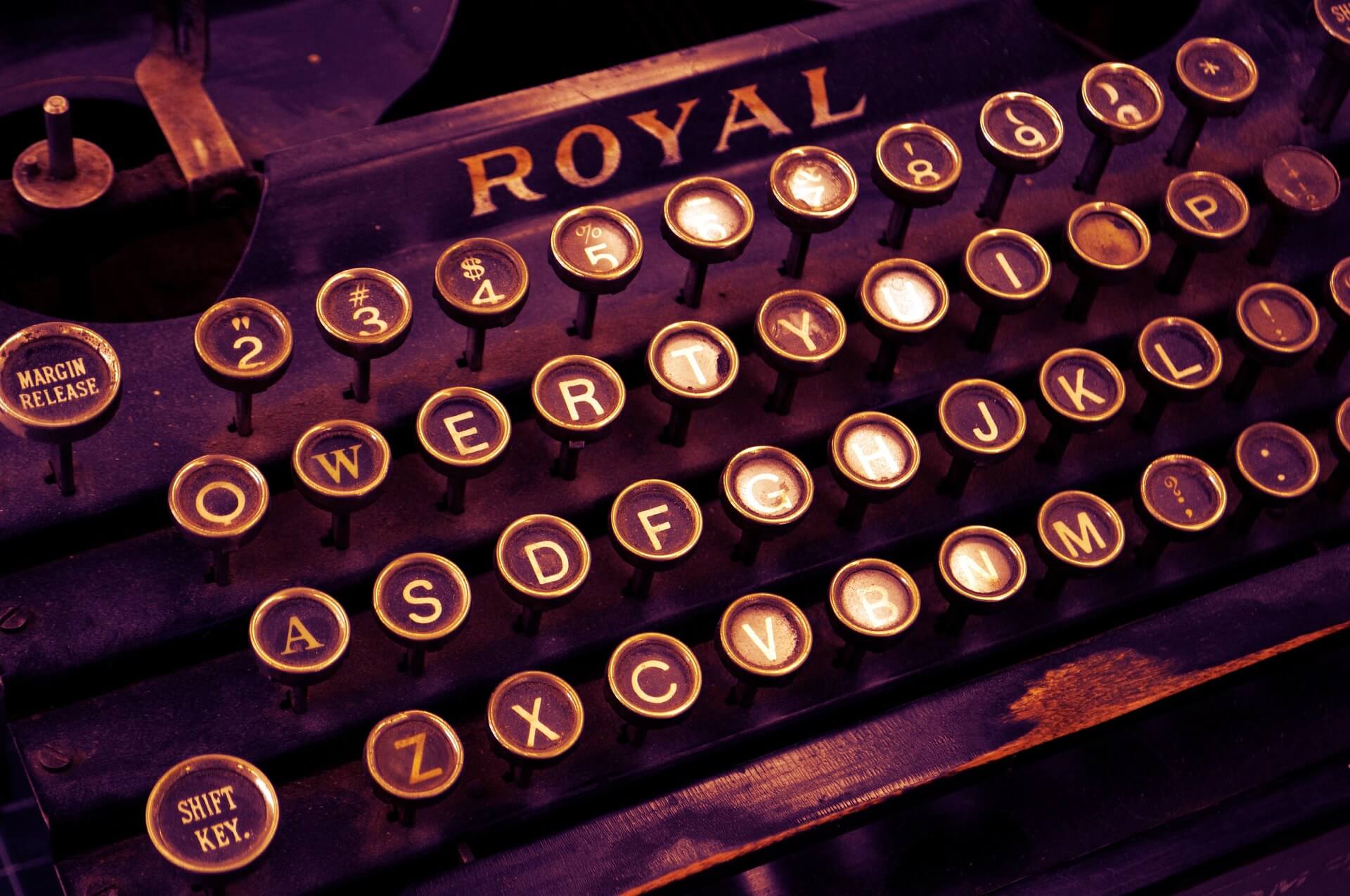
One of the most common questions writers ask is: How long should my book be? Knowing the standard word and page counts for your book type can save you from a lot of rewriting, rejections, and confused readers.
Word count can directly affect how your book is received. If a manuscript is too long or too short for its genre, it might get rejected, even if the writing is strong.
A book that doesn’t meet expectations may also feel too slow or too rushed to readers. And for print books, length even affects production costs—something many new authors don’t consider until it’s too late.
This guide breaks down the typical word and page counts for different types of books and genres. It also explains why these numbers matter, how they affect your writing and publishing strategy, and what you can do if your manuscript doesn’t quite fit the norm.
Whether you’re going the traditional publishing route or planning to self-publish, understanding the correct length for your book is a key part of making it a success.
Why Word Count Standards Exist
Word count standards are more than just arbitrary publishing traditions. They’re like the silent handshake between you and everyone else in the publishing world—readers, editors, booksellers, even algorithms.
I remember finishing my first novel draft and proudly clocking in at 135,000 words. It felt like a major achievement until I started submitting to agents and got a string of polite rejections.
One kind editor finally clued me in: the story had promise, but it was bloated. It wasn’t the idea that turned them off. It was the fact that I didn’t yet understand the expectations of the genre.
Here’s why word count matters:
- Readers have expectations. A mystery that drags on for 120,000 words might lose suspense. A fantasy under 60,000 words might feel like it’s missing meat. People come to each genre with an internal meter of how long the story should take to unfold.
- Agents and publishers filter manuscripts by length. If your book is 200,000 words, it’s either an epic masterpiece—or a red flag. They’ve got limited time and even tighter margins. Being within range tells them you understand the market.
- Printing and distribution costs are real. More pages = higher cost = higher retail price. That can hurt your sales, especially if you’re self-publishing and trying to stay competitive.
- Formatting consistency matters. Especially in digital publishing. Amazon KDP, for instance, calculates royalties partly based on page reads. The length of your book could affect how much you earn, especially if you’re part of Kindle Unlimited.
“The hardest thing about writing is keeping it tight. Long is easy. Short takes skill.” — Stephen King
And he’s right. Anyone can ramble for 100,000 words. The true craft lies in trimming the fat and making every paragraph count. That’s what we’re going to unpack next.
Word Count and Page Count: Not the Same Thing
Page count can be misleading. A 300-page book can have 50,000 or 90,000 words depending on font size, line spacing, and trim size.
I learned this the hard way after proudly telling a friend that my manuscript was “300 pages long”—only to realize that, with different formatting, it could have shrunk or expanded by dozens of pages.
Standard word count benchmarks exist for a reason: they reflect industry norms that agents, editors, and readers have come to expect.
It was a wake-up call. In publishing, page count is flexible, but word count is the real currency.
Think of it like calories in food. Two plates might look the same size, but one could be a salad and the other a cheeseburger. It’s what’s inside that counts.
A general rule of thumb:
Format Average Words per Page
Print book (6"x9") 250–300 words
eBook (Kindle) Variable
Manuscript (12pt TNR, double-spaced) ~250 words
Use word count, not page count, as your gold standard.
Fiction: Ideal Word Counts by Category and Genre
Each genre has its own sweet spot, and readers can feel when a book misses the mark.
It’s like trying to bake a cake without a recipe: too short and it feels undercooked, too long and it drags like a dinner guest who won’t leave. I’ve learned this the hard way.
The industry cares about your story’s shape, structure, and length. Word count is part of your book’s DNA. And mastering it shows that you understand both craft and market.
Fiction Type Standard Range Ideal Word Count Example Titles
Short Story 1,000–7,500 3,000–5,000 The Lottery (Shirley Jackson)
Novelette 7,500–17,500 10,000–15,000 The Slow Regard of Silent Things (Patrick Rothfuss)
Novella 17,500–40,000 25,000–35,000 Of Mice and Men (John Steinbeck)
Novel (General) 40,000–120,000 70,000–100,000 The Catcher in the Rye (~73,000)
Genre-Specific Novel Guidelines
Now let’s zoom in a bit closer. It’s one thing to know the standard word count for a novel, but once you step into a specific genre, the expectations shift, and sometimes drastically.
What works for a sci-fi epic won’t fly for a cozy romance. Each genre has its own rhythm and reader habits, and trust me, people notice when something feels off.

When I was drafting my first young adult novel, I was aiming for around 100,000 words, thinking, “The more detail, the better.” But the feedback was crystal clear: it felt heavy for the genre.
Once I trimmed it down to about 65,000 words, everything flowed better. And more importantly, beta readers said they finished it in one sitting. The ideal word count gives your readers the experience they signed up for.
Here’s a breakdown of genre-specific novel guidelines with real word count benchmarks to help you stay on the right track:
Genre Standard Range Ideal Word Count Notable Example
Romance 50,000–90,000 ~70,000 The Notebook (Nicholas Sparks, ~52,000)
Mystery/Thriller 70,000–90,000 ~80,000 Gone Girl (~79,000)
Historical Fiction 90,000–120,000 ~100,000 The Book Thief (~118,000)
Fantasy 90,000–150,000 100,000–120,000 A Game of Thrones (~298,000)
Sci-Fi 80,000–120,000 ~100,000 Dune (~185,000)
Young Adult 50,000–80,000 ~65,000 The Hunger Games (~99,750)
Middle Grade 20,000–55,000 ~35,000–45,000 Charlotte’s Web (~31,000)
Non-Fiction: Word Count by Type
Non-fiction books also follow predictable length ranges, whether you’re writing to educate, inspire, or persuade.
When one of my students wrote her first business ebook, she aimed for 60,000 words because she knew that was the sweet spot for self-help titles that didn’t overstay their welcome. And she told me that trimming it down was harder than writing it in the first place.
Non-fiction isn’t about filling space. It’s about delivering value in a clean, organized, and readable package.
The truth is, non-fiction readers are some of the most time-conscious people you’ll ever meet. They’re reading to solve a problem, learn something new, or get a fresh perspective. And if your book takes too long to deliver that, you’ll lose them before Chapter 3.
Publishers and editors know this, too. That’s why specific word count ranges have become the norm across each non-fiction category. The structure, pacing, and even the pricing of your book can all hinge on staying within the ideal word count range.
Here’s a breakdown of the most common non-fiction types, their standard length, and why that matters:
Type Standard Range Ideal Word Count Purpose
Self-Help 40,000–70,000 ~50,000 Actionable insights without fluff
Business 50,000–80,000 ~60,000 Case studies, frameworks, and strategies
Memoir 60,000–90,000 ~75,000 Narrative-driven, personal stories
Academic 70,000–130,000 ~100,000 Research-heavy, scholarly work
Essays 40,000–70,000 Varies Thematic cohesion, individual pieces 2k–5k words
Guidebooks 20,000–60,000 ~30,000 Informative and concise
Cookbooks 25,000–60,000 Depends Focus on visuals, instructions, layout
Special Formats: Kids’ Books, Graphic Novels, and More
Writing a children’s book or graphic novel might look simple from the outside. Fewer words, lots of pictures… how hard can it be, right? But if you’ve ever tried to write one yourself, you’ll know there’s a real art to getting it just right.
The true craft lies in trimming the fat and making every paragraph count.
In special formats like these, page count is often driven by layout, illustration needs, and age-appropriate pacing, not just by how many words you manage to squeeze in.
Word count still matters, especially when publishers have tight guidelines, but in these cases, visuals are doing a lot of the storytelling heavy lifting.
Children’s Books
When writing for children, it’s best to think like a child, too. Each category below has its own pacing, tone, and attention span sweet spot. And trust me, the shorter the book, the harder it is to pull off. Every word has to matter.
Type Word Count Description
Board Books 0–300 Perfect for babies and toddlers. Bold images, repetitive language, and minimal text per page.
Picture Books 300–800 Geared toward ages 3–7. Classic bedtime stories, often 32 pages, with full-spread illustrations.
Early Readers 1,000–2,500 For children beginning to read on their own. Simple plots, short sentences, and lots of white space.
Chapter Books 4,000–10,000 Aimed at ages 7–10. These have chapters, more complex stories, and fewer illustrations.
These books rely heavily on illustrations, which affect page count more than word count. You might only have a few hundred words, but your story structure still needs to be solid from beginning to end.
Graphic Novels
Think of graphic novels as screenplays in book form—with art carrying half the weight. These aren’t just for kids anymore. Adult, YA, and middle-grade graphic novels are now one of the fastest-growing categories in publishing.
Format Word Count Pages
Standard 15,000–45,000 ~100–200
Pacing and dialogue are everything. You don’t need long monologues when a single facial expression in a panel can say it all. Plan your page turns for big moments, and don’t overwrite. Your artist—or your art budget—will thank you.
Blog Posts
Writing online content? Then you’re working with a totally different playbook. Readers scroll fast, bounce easily, and love skimming. So length needs to match your goals—whether it’s grabbing attention or dominating Google search results.
Type of Content Ideal Word Count Purpose / Description
Short Form 300–600 Best for quick updates, news briefs, or announcements. Easily digestible but less in-depth.
SEO-Optimized Post 1,000–2,000 The sweet spot for most blog strategies. Long enough to rank well, short enough to hold attention.
Pillar / Ultimate Guide 2,500–4,000+ Comprehensive, in-depth posts that establish authority. Ideal for tutorials, resource hubs, or all-in-one guides.
Want to go viral? Keep it short. Want to rank on Google and build long-term traffic? Go long and back it up with keywords, structure, and value.
Formatting Factors That Affect Page Count
I once formatted the same 50,000-word manuscript two different ways—just experimenting out of curiosity—and ended up with two wildly different results.
One version was a clean 160 pages. The other? A chunky 210. And no, I didn’t add a single word. I learned from that experience that page count isn’t just about how much you write. It’s about how you format it.
If you’re self-publishing, this can be a make-or-break moment. Print-on-demand services like Amazon KDP charge based on page count, not word count, so adding unnecessary pages could cut into your profits. And if you’re planning a hardcover edition, that extra bulk might even change the pricing tier or spine width.
Here’s exactly what can cause your page count to balloon (or shrink) without touching your manuscript:
Factor Impact
Font Type & Size Garamond 11pt uses less space than Times New Roman 12pt
Line Spacing Single, 1.15, or double changes total pages
Trim Size 5"x8" vs. 6"x9" changes layout density
Chapter Breaks More white space = more pages
Images/Graphs Adds pages even if word count stays same
If you want a realistic sense of what your final layout will look like, use tools like Reedsy Book Editor (great for beginners) or Vellum (my go-to if you’re using a Mac). These tools help you preview your interior formatting, so you won’t be shocked when your 200-page novel magically turns into a 270-page epic.
Word count can directly affect how your book is received. Too long or too short, and you risk losing your audience before they’ve even finished Chapter One.
When it comes to formatting, little tweaks can make a big dent in your publishing costs.
What If You’re Over or Under the Ideal Range?
Here’s the truth: hitting the standard word count can feel like threading a needle. Some writers overwrite like they’re trying to win a word count contest. Others write too lean, thinking readers can fill in the blanks.
But in publishing, too short or too long isn’t just a stylistic quirk. It can make or break your chances of getting picked up or keeping readers hooked.

When I finished my first nonfiction draft, I proudly hit 90,000 words—only to be told by an editor that 25,000 of those words were fluff. Yep. Whole paragraphs of “what am I even saying here?”
And I’ve also seen manuscripts that were too short, with great ideas that fizzled out like a sparkler in the rain. It’s not about writing more or less. It’s about writing better.
Too long? You may need to cut:
- Repetitive scenes or dialogue
- Unnecessary side characters
- Over-explained backstory
Too short? Add value with:
- Subplots that connect to the theme
- Deeper character development
- More vivid world-building or expert examples (in nonfiction)
“Editing is not a punishment; it’s where the real writing happens.” — Cheryl Strayed
Yes, there are unicorn exceptions. The Great Gatsby clocks in at around 47,000 words. Harry Potter and the Order of the Phoenix? A doorstop-worthy 257,000.
But unless you’re F. Scott Fitzgerald or J.K. Rowling, stick to the norms. Standard word count ranges exist for a reason—they’re tested, trusted, and expected.
Hit the Mark, Not Just the Limit
Word count plays a key role in shaping a manuscript’s success, but it should never restrict your creativity. Think of it as a set of signposts on a long journey. While there’s room for flexibility and exploration, straying too far from the expected range can result in losing your readers’ interest.
Standard word count benchmarks exist for a reason: they reflect industry norms that agents, editors, and readers have come to expect. Whether you’re pursuing traditional publishing or self-publishing, understanding and working within these guidelines can give you a significant advantage—especially if you’re early in your writing career.
From personal experience, it’s easy to lose sight of this balance. A novella I once wrote expanded into 65,000 words as I kept “adding depth.” Unfortunately, the result was a sluggish manuscript.
My editor described it as a novel with the framework of a novella, an observation that proved accurate. After editing it down to 40,000 words, the pacing improved dramatically, and the story became much more engaging.
On the other hand, I’ve also written concise nonfiction guides of around 20,000 words that readers appreciated for their clarity and focus. The takeaway is clear: powerful writing isn’t about length—it’s about making every word count.
In publishing, page count is flexible, but word count is the real currency.
If your manuscript needs more or fewer words to tell the story effectively, that’s acceptable—provided the content remains strong and well-paced. The ultimate goal is to respect your reader’s time while delivering a compelling, memorable experience.
For those pursuing traditional publishing, hitting the expected word count range is important. If you choose the self-publishing path, you’ll have more flexibility—but it’s still wise to understand and consider genre expectations before deciding to break them.
When uncertain, seek feedback. Beta readers and professional editors can provide valuable insight into what’s working and what needs adjustment. They can help identify unnecessary filler, overlooked gaps, or pacing issues you may not recognize on your own.
Need support in reaching your ideal word count? Try our free Word Count Calculator or subscribe to our publishing newsletter for expert insights designed to help you create your best work yet. Don’t just write—write with intention.




